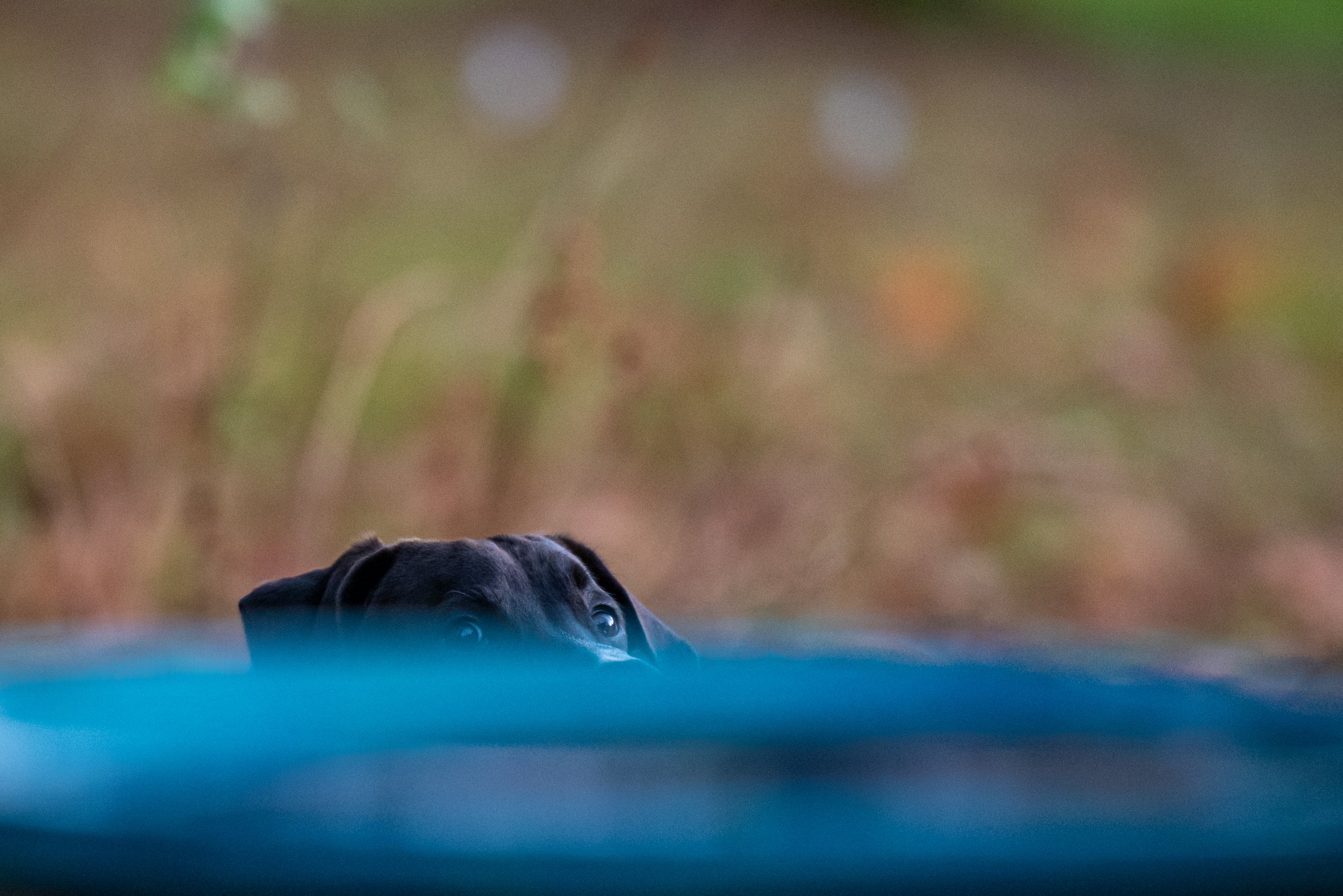Best Lens For Dog Photography
This blog is reader-supported; I may earn an affiliation commission when you buy through links on this site.
If I had to pick one lens to photograph my dog Nico with for the rest of his life, it would be my Sony 70-200 F2.8 GM OSS. Six hundred and ninety-two days ago I started a project to photograph Nico every day of his life. Over that time, I have captured tens of thousands of images of him. A 70-200mm lens is one of the best to photograph a dog. Here are five reasons why this is my number one lens for dog photography:
1. Ideal Focal Length For Portraits
The ideal focal length for portraits is 50-105mm, with most photographers preferring something in the middle of that range. This focal length doesn’t distort the face and allows you to frame a portrait of a subject without being uncomfortably close to them. It’s also easy to get a nice background separation in this range. All of this is true for dog portraits as well. In addition, having a bit of extra reach on the long end allows for plenty of space when capturing action shots of a dog running from a far distance. If you don’t have a full-frame camera or the budget for a 70-200mm lens, consider less expensive 70-300mm options.
This photo was captured at 70mm, allowing me to fill the frame with Nico’s face without distortion that might be apparent from a wider angle lens.
2. Image Sharpness
Whether you are shooting Sony, Nikon, or Canon 70-200mm F2.8 lenses are almost universally very sharp lenses. If you want a cheaper or slightly less expensive version you can go with a 70-200mm F4 lens which will also be very sharp but won’t perform as well under low light and will have less background separation. Dog photos that capture every little hair and detail of a dog’s face will stand out.
If you look closely, you can not only see me in Nico’s eyes but you can also see the front door to our house, the steps leading up to them, and the trees beyond. You can even count the hairs around his eyes. This detail and sharpness is a combination of both the lens (Sony 70-200mm F2.8) and camera body (Sony A7RIV).
3. Fast Autofocus
When photographing dogs, I find there are two speeds, zero or one hundred. A 70-200mm F2.8 lens is particularly good at capturing photographs of dogs running. The ability of the camera and lens to stay locked onto a dog moving at high speed will help capture unique shots. Indeed, a skilled photographer can get extraordinary action shots of a dog with a slow-focusing or even a manual-focus lens. Where I find fast autofocus helps the most is picking just the right frame. The dog’s ears, eyes, mouth, tongue, tail, and so on will be in a different position with each shot. When you can get a whole series in focus, finding the one shot that stands out makes it much easier.
Fast autofocus helps capture fast action. While a lot of autofocus performance is determined by the camera body, the speed of the lens is also important.
4. Blurry Backgrounds
In the photography world, we call the blur you see behind a subject bokeh. This blur is achieved when shooting at wide-open apertures, such as F2.8, and there is a bit of distance between the subject and the background. The farther you are from the subject, the more blur you will get as well. A 70-200mm F2.8 lens is ideally suited for getting an excellent blurry background that makes the subject pop in the frame.
This image uses both foreground and background blur to make Nico stand out.
5. Durability
I don’t abuse my photography equipment, but I don’t baby it either. My camera, lenses, and other gear are tools used to get a job done. Whether working on shooting Nico outdoors or venturing to remote locations for landscape photography, I need to know my equipment can stand up to the conditions it will be exposed to. In general, 70-200mm lenses have professional build quality and weather sealing. This means the lens should last many years and is less likely to fail when you need the lens most.
My Lens Recommendations
The links below will bring you to Amazon, where as an Amazon Associate I earn from qualifying purchases. This is an important source of support for providing gear reviews, suggestions, and tips on this website. The options below are broken down by both DSLR and mirrorless options, as well as more budget-friendly alternatives.
Best Full-Frame Mirrorless Lenses
Sony FE 70-200mm f/2.8 GM OSS II Lens
Budget-Friendly Alternative Lenses
Tamron 70-210mm f/4 Di VC USD Lens (Canon & Nikon)
Sigma 70-200mm f/2.8 OS HSM Lens (Canon & Nikon)
Best Full-Frame DSLR Lenses
Nikon AF-S 70-200mm f/2.8 FL ED FX VR Lens
Canon EF 70-200mm f/2.8L IS III Lens



